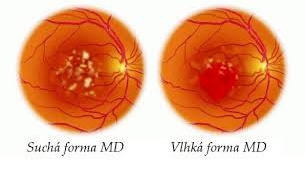Retina

A Detached Retina is a serious and sight-threatening event. It occurs when the retina becomes separated from its underlying supportive tissue. The retina cannot function when these layers are detached. And unless the retina is reattached soon, it may result into permanent loss of vision.
Retinal Detachment could be a result of an eye or face injury, cataract surgery, tumors, or eye diseases. But diabetes may also cause Retinal Detachment. It usually occurs when a tear or hole in the retina allows the liquid vitreous to get under the retina and accumulate. The retina separates from the back wall of the eye. This detachment causes symptoms of a gradually enlarging veil or dark shadow in the peripheral visual field. When the detachment extends into the central part of the retina (macula) the central vision is lost.
Retinal Detachment should be fixed immediately through a retinal detachment surgery by a retina specialist to prevent complete loss of vision. Ideally, the Retinal Detachment should be repaired prior to the involvement of the macula. If the macula becomes detached, the vision is unlikely to be as good as it was prior to the Retinal Detachment even with successful surgical reattachment.
- How can diabetes affect eye?You may have heard that diabetes causes eye problems and may lead to blindness. People with diabetes do have a higher risk of blindnessand other various eye problems than people without diabetes. Diabetes can affect the eyes and vision in a number of ways. It may lead to frequent fluctuations in vision, cataract in young age, decreased vision due to involvement of optic nerve, temporary paralysis of the muscles controlling the movement of eyes and thus double vision, the Incidence glaucoma is higher in diabetics. The most significant complication of diabetes in eye is diabetic retinopathy and its complications.
- Symptoms :
- When detachment occurs, appearance of curtain falling in front of the eye, decreased vision or total obscuration of vision may happen.
- Bright flashes of light, especially in peripheral vision is felt
- Blurred vision
- Floaters in the eye
- Sudden appearance of shadow or blindness in a part of the visual field of one eye is experienced
Age Related Macular Degeneration (ARMD): In Brief
- The painless disorder that affects the macula, in one or usually both eyes, causing progressive loss of central and detailed vision.
- It is the leading cause of significant vision loss among patients over the age of 50.
- Does not lead to total blindness but patient may find it difficult to do read, drive and recognize people.
- The area surrounding the macula is not affected so peripheral vision remains clear and patient can usually still move around fairly freely.


Age Related Macular Degeneration (ARMD):
- The painless disorder that affects the macula, in one or usually both eyes, causing progressive loss of central and detailed vision.
- It is the leading cause of significant vision loss among patients over the age of 50.
- Does not lead to total blindness but patient may find it difficult to do read, drive and recognize people.
- The area surrounding the macula is not affected so peripheral vision remains clear and patient can usually still move around fairly freely.

